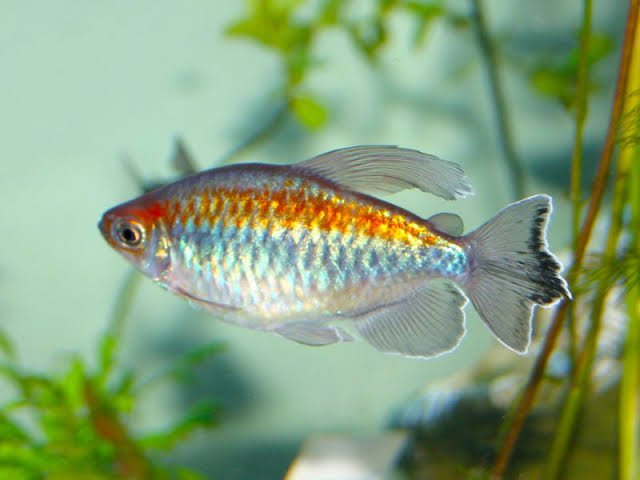


Congo Tetras (Phenacogrammus interruptus) are a beautiful addition to any aquarium. This freshwater fish, which is native to the Congo River Basin in Central Africa, is well-known throughout the world for its graceful, flowing fins and iridescent rainbow scales. Congo Tetras are among the most common schooling fish in home aquariums because they are calm, resilient, and simple to maintain, regardless of your level of experience.
Your tank will be more balanced and active if you keep both Congo Tetra males and females together. They flourish in groups due to their gregarious, schooling nature, and their dynamic, synchronized swimming makes any community aquarium come to life.
Scientific Name: Phenacogrammus interruptus
Common Name: Congo Tetra
Size: Males up to 8.5 cm (3.3 inches); females slightly smaller
Lifespan: 3–5 years with proper care
Temperament: Peaceful and social; thrives in groups
Diet: Omnivorous; enjoys a varied diet of high-quality flakes, pellets, and occasional live or frozen foods like brine shrimp and bloodworms
Water Parameters:
Temperature: 22–28°C (72–82°F)
pH Level: 6.0–7.5
Hardness: 2–15 dGH
Minimum Tank Size: 110 liters (30 gallons) for a small group.
Beautiful Appearance: Scales that shine in shades of blue, violet, and gold, resembling rainbows.
Modern Motion: As they glide, flowing fins offer style.
Calm Nature: Perfect for public aquariums.
Hardy and Adaptable: Easy to take care of and suitable for beginners.
For natural behavior, active schooling is best maintained in groups of six or more.
Substrate: Fine sand or smooth gravel.
Aquascape: Live plants (Anubias, Java Fern), driftwood, and hiding spots.
Filtration: Gentle but effective filtration to maintain clear water.
Lighting: Moderate lighting enhances their iridescence.
Tank Lid: Required, as they can occasionally jump.
Tip: A dark substrate and lush planting will make the colors of Congo Tetra females and males shine even brighter.
Are Congo's Tetras dangerous?
No, however, males may occasionally exhibit slight dominance; these fish are inherently gentle.
Will shrimp be consumed by Congo Tetras?
Although they may nibble at extremely small shrimp or baby shrimp, they typically avoid larger shrimp species, such as Amano shrimp.
Congo Tetras' safe buddies include:
Steer clear of species that might attack their flowing fins, such as those that are aggressive or fin-nipping.
Tropical fish staple diet: premium flakes or pellets.
Protein Boost: Bloodworms, daphnia, and brine shrimp, either frozen or alive.
Vegetables: Serve spinach, cucumber, or zucchini that have been blanched.
Feeding Schedule: Avoid overfeeding; eat two to three small meals a day.
Are Congo Tetras aggressive?
No, they are peaceful schooling fish. Males may display mild fin-flaring but are not aggressive.
Will Congo Tetras eat shrimp?
They generally do not bother larger shrimp but may nip at very small shrimp species.
What do Congo Tetras eat?
They are omnivore flakes, pellets, live foods, frozen foods, and vegetables.
Congo Tetra female vs male – how do you tell the difference?
Males are larger with long, flowing fins and vibrant rainbow colors, while Congo Tetra females are smaller with subtle golden hues.
Congo Tetra price – how much do they cost?
In Australia, Congo Tetras for sale typically range between $10–$20 each, depending on size and availability.
Can Congo Tetras live with angelfish?
Yes, they coexist peacefully with angelfish in a large, well-planted tank.
Call-to-Action (CTA)
Shop Congo Tetras for sale and enjoy their rainbow colors in your freshwater tank.
Thanks for subscribing!
This email has been registered!
